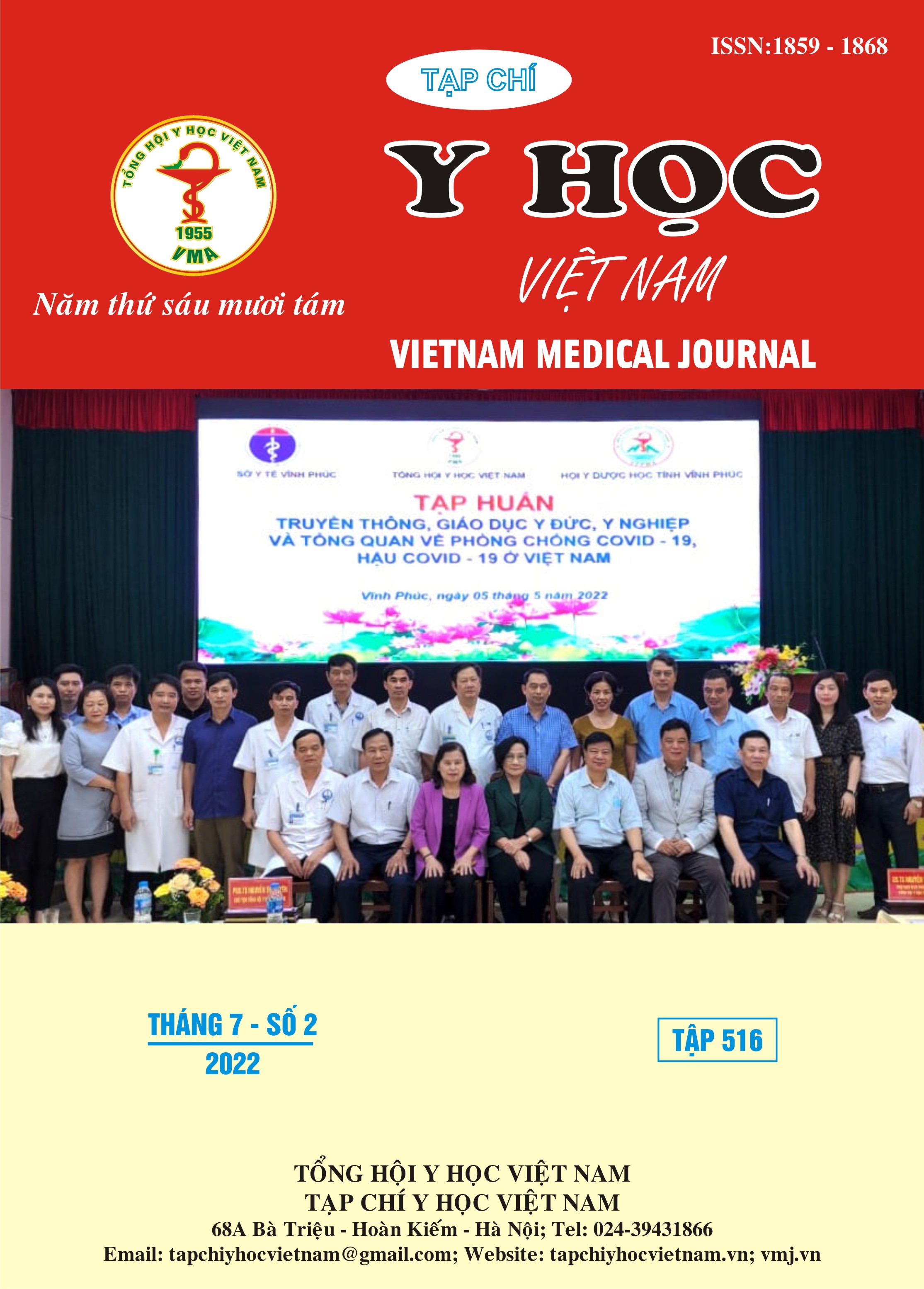ANASSESSMENT OF VENOUS THROMBOEMBOLISM PREVENTION IN INTENSIVE CARE UNIT PATIENTS IN E HOSPITAL
Main Article Content
Abstract
Objectives: To assess the suitability and the situation of using anticoagulants in the prevention of venous thromboembolism (VTE) at the intensive care unit (ICU) of E hospital. Subjects and research methods: A descriptive, cross-sectional study was conducte. Data was retrospectively collected from medical records of patients who were treated and discharged between 07/2021 and 03/2022 from the ICU. Results: The study enrolled 111 patients, including 86 nonsurgical patientsand 25 surgical patients. The percentageofprevention of unreasonable is 73.9%, including 54.1% under-prophylaxis, 14.4% provision but inappropriate measures, and 5.4% over-prophylaxis. All patients receiving prophylaxis in the study received prophylaxis with enoxaparin (26.1%), in which the proportion of patients with appropriate choice, dose, time of administration, and duration was 24.1%, 69.0%, 41.4%, and 41.4%, respectively. During using drug, 55.2% of patients were monitored by laboratory tests, 17.2% of patients had a risk of drug interactions, and 10.3% of patients experienced bleeding events. Conclusions: The proportion of patients with a need for prophylaxis was high (74.8%), but the current situation of prevention is not suitable with the proportion of inappropriate prevention accounting for 73.9%, of which under-prophylaxis distribute to the largest rate (54.1%). Appropriate prophylaxis can reduce VTE complications and mortality, and should be followed by currentguidelines.
Article Details
Keywords
venous thromboembolism, deep venous thrombosis, pulmonary embolism, prevention, intensive care unit, ICU
References
2. Kahn S.R., Lim W., Dunn A.S. và cộng sự. (2012). Prevention of VTE in nonsurgical patients: Antithrombotic Therapy and Prevention of Thrombosis, 9th ed: American College of Chest Physicians Evidence-Based Clinical Practice Guidelines. Chest, 141(2 Suppl), e195S-e226S.
3. Falck-Ytter Y., Francis C.W., Johanson N.A. và cộng sự. (2012). Prevention of VTE in orthopedic surgery patients: Antithrombotic Therapy and Prevention of Thrombosis, 9th ed: American College of Chest Physicians Evidence-Based Clinical Practice Guidelines. Chest, 141(2 Suppl), e278S-e325S.
4. National Guideline Centre (UK) (2018), Venous thromboembolism in over 16s: Reducing the risk of hospital-acquired deep vein thrombosis or pulmonary embolism, National Institute for Health and Care Excellence (UK), London.
5. Hội Tim mạch học Quốc gia Việt Nam (2016). Khuyến cáo về chẩn đoán, điều trị và dự phòng thuyên tắc huyết khối tĩnh mạch. .
6. Cohen A.T., Tapson V.F., Bergmann J.-F. và cộng sự. (2008). Venous thromboembolism risk and prophylaxis in the acute hospital care setting (ENDORSE study): a multinational cross-sectional study. Lancet Lond Engl, 371(9610), 387–394.
7. Parikh K.C., Oh D., Sittipunt C. và cộng sự. (2012). Venous thromboembolism prophylaxis in medical ICU patients in Asia (VOICE Asia): a multicenter, observational, cross-sectional study. Thromb Res, 129(4), e152-8.
8. Nguyễn Văn Tuấn và Trần Thị Anh Thơ (2021). Thực trạng sử dụng thuốc dự phòng thuyên tắc huyết khối tĩnh mạch trên bệnh nhân phẫu thuật tại bệnh viện Hữu Nghị đa khoa Nghệ An. Tạp chí Y học Việt Nam, 498(2).
9. Hoàng Bùi Hải, Đỗ Giang Phúc, và Kim Văn Vụ Dự phòng thuyên tắc huyết khối tĩnh mạch ở một số loại phẫu thuật có nguy cơ. Tạp chí nghiên cứu Y học, 87(2), 68–73.


